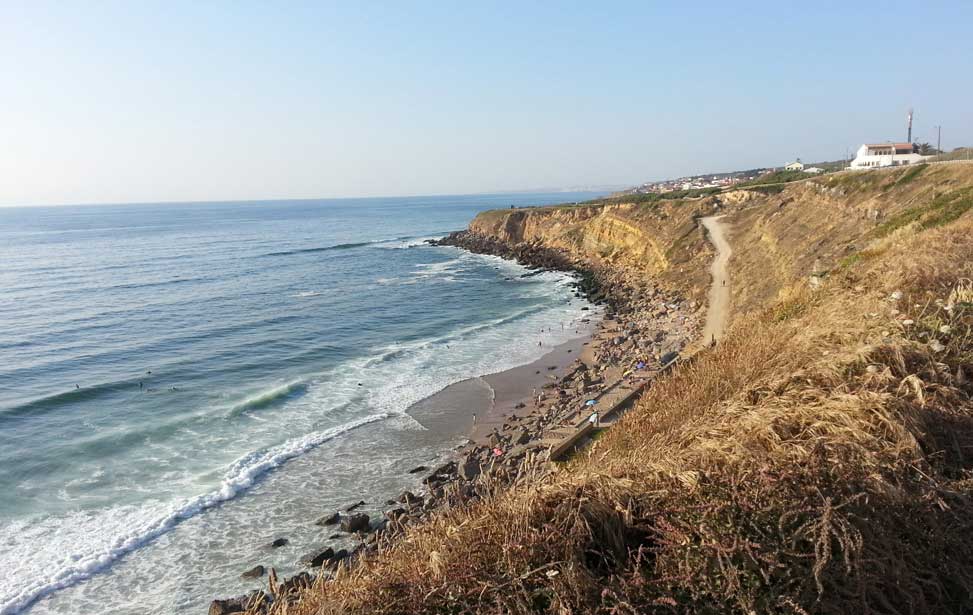Praia da Adraga stands out as an idyllic cove, perfect for sunbathing and swimming, celebrated for its crystal-clear waters and expansive sandy shores. Accessible via a winding road from the nearby village of Almoçageme, this beach boasts rocky headlands and offshore islets, showcasing remarkable rock formations that enhance its rugged charm. Praia da Adraga earned the prestigious distinction of being voted the third-best European beach in the Sunday Times' 20 best European Beaches awards in 2003. Unlike larger beaches in the vicinity, Praia da Adraga tends to be less crowded, especially on weekdays, with ample parking available most of the time. Visitors can enjoy convenient amenities such as public toilets, showers, and a quality restaurant offering a diverse selection of fish dishes. During the high season, lifeguards patrol the beach for added safety.
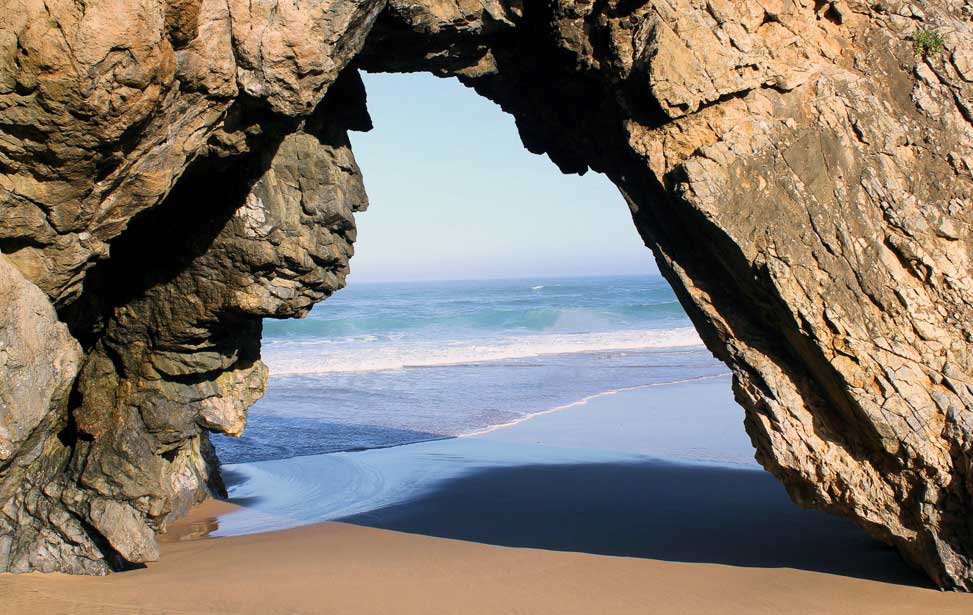
Praia da Aguda, a narrow stretch of sand spanning 500 metere, nearly vanishes during high tide. Situated northwest of Sintra near the village of Fontanelas, accessing this beach entails descending a cliff-side path from the nearby car park, navigating a series of steep steps. The descent offers stunning panoramic views of the shoreline below, adding to the allure of the journey. Praia da Aguda is a favoured spot among anglers seeking to catch sea bass, adding to its appeal for outdoor enthusiasts. Since there are no amenities available, visitors are advised to come prepared with their essentials.
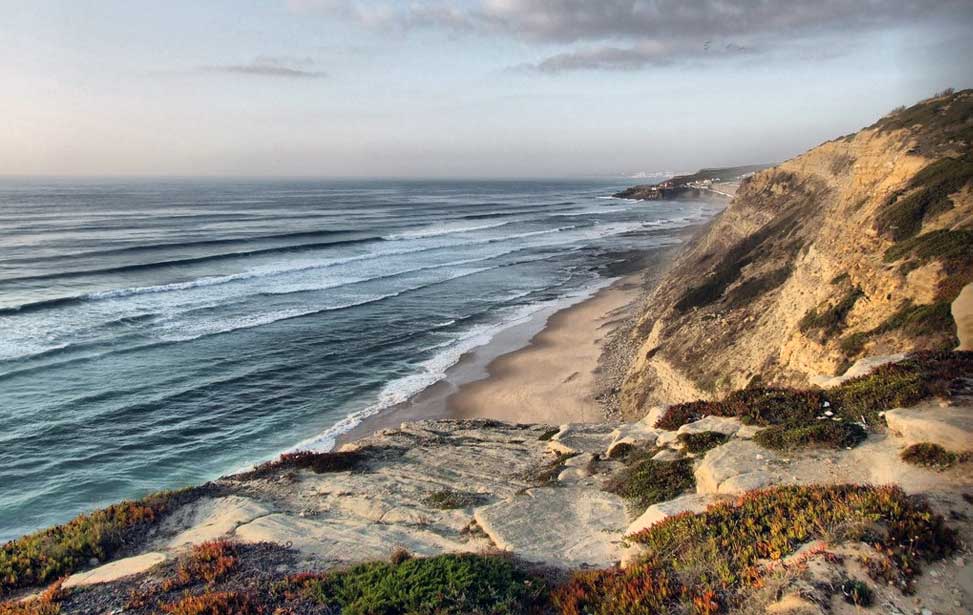
For those seeking seclusion and tranquility, Praia da Ursa offers an ideal escape. Situated just north of Cabo da Rocha, mainland Europe's westernmost point, this sandy cove boasts a rugged and untamed beauty. Offshore, imposing rock stacks and islets engage in a timeless battle with the waves, making for captivating subjects for photographers. The beach derives its name from one prominent rock formation, the colossal Rocha da Ursa (Bear Rock), which is said to resemble a mother bear with a cub on her lap. Praia da Ursa's pristine and unspoiled nature results from its remote location. Accessible via a winding path from the nearby car park, the journey can take up to an hour, posing challenges for those with mobility limitations. However, for the adventurous souls willing to embark on the trek, the reward is the breathtaking spectacle of one of Portugal's most beautiful beaches.
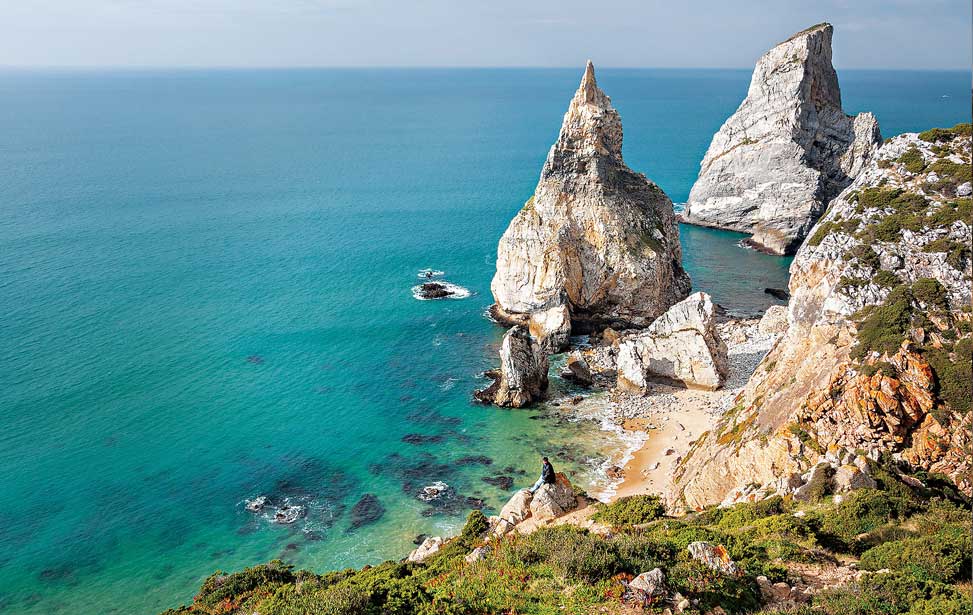
Praia da Vigia, also known as Look-out Beach, is situated at the southern tip of São Julião beach, merging with it at low tide. Accessible via a steep path descending the cliff-side, this secluded beach offers a stretch of golden sands extending for one and a half miles (2km). Sometimes referred to as Assafora beach, after the nearby village, Praia da Vigia's remote location attracts naturists seeking solitude. With no facilities available, visitors are advised to come prepared. A car park is conveniently located at the top of the hill for easy access.
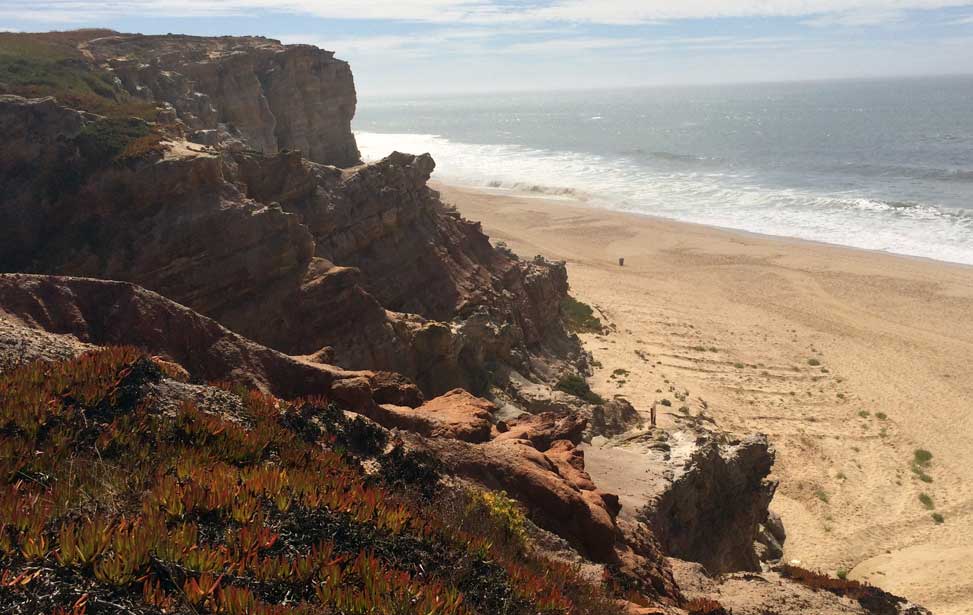
Praia das Maçãs offers a pleasant expanse of sand, complemented by a range of amenities and facilities catering to water sports enthusiasts. Its name, meaning "Apple Beach," derives from the Rio das Maçãs (also known as the Rio de Colares), which flows into the sea at the beach's southern end. The river passes through orchards, leading to the occasional sight of apples drifting downstream and washing up on the shore during autumn.
The charming town of Praia das Maçãs has evolved into a delightful resort destination, boasting numerous restaurants, cafés, bars, craft shops, and accommodation options. Local residents from Sintra frequent the area year-round, drawn by the delectable seafood offerings available here.
During the summer months, the historic Sintra tram concludes its scenic 45-minute journey through the picturesque countryside of the Parque Natural de Sintra-Cascais at Praia das Maçãs, delighting passengers along the way. Families particularly enjoy visiting this beach, as it features a large outdoor swimming pool with slides, diving boards, and a children's pool conveniently located right by the shore. Additionally, there's a playground and picnic area, making it an ideal destination for families seeking both relaxation and recreation.
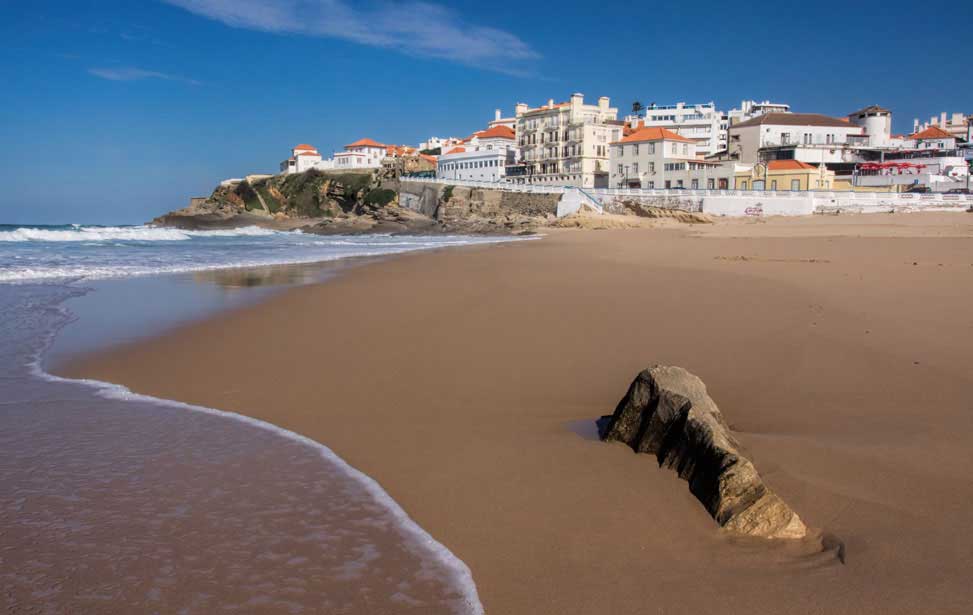
Praia de São Julião is situated along the northern coastline of the Sintra area, offering a picturesque expanse of fine white sand stretching nearly two kilometres. The beach is characterised by the River Falcão, which during the summer months dwindles to a trickle as it meets the shore. Its inviting blue waters attract both surfers and swimmers alike. Conveniently located restaurants and bars dot the coastline, providing visitors with options for refreshments and dining. Essential amenities such as showers and public toilets are readily available for beachgoers' convenience. Additionally, ample parking is provided across two spacious car parks, ensuring hassle-free access to this popular beach destination.
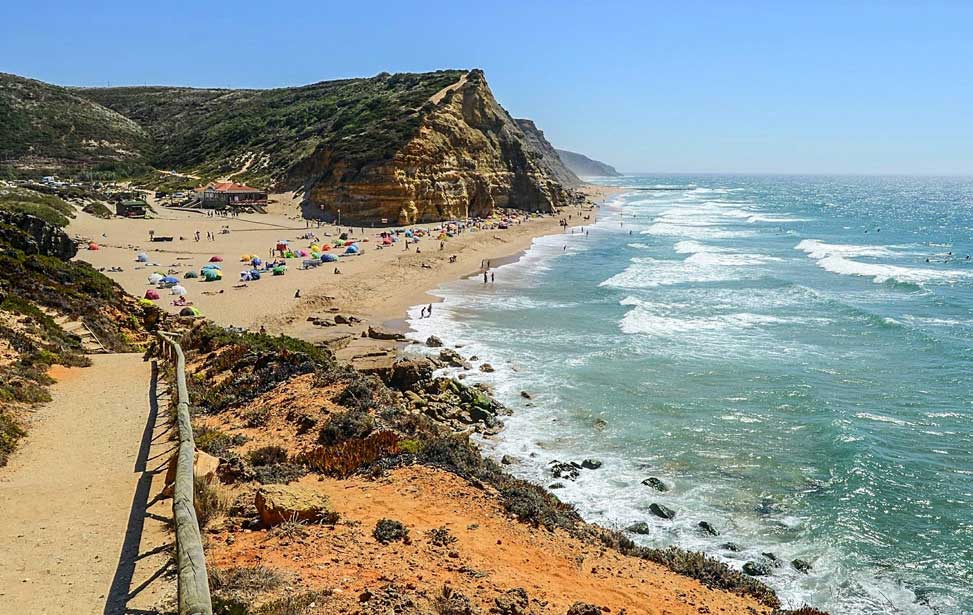
Located within a tiny cove at the lower end of the Sintra Coast, close to Guincho beach and Cascais, this beauty spot is overlooked often. Access to the beach is through pine forests along a dirt track. Somewhat exposed to Atlantic winds and tumultuous waves makes Praia do Abano a magnet for surfers and windsurfers. Another draw for visitors is the excellent Abano restaurant which has commanding views over the cove below. Close by atop of the cliffs is the battered Guincho Fort.
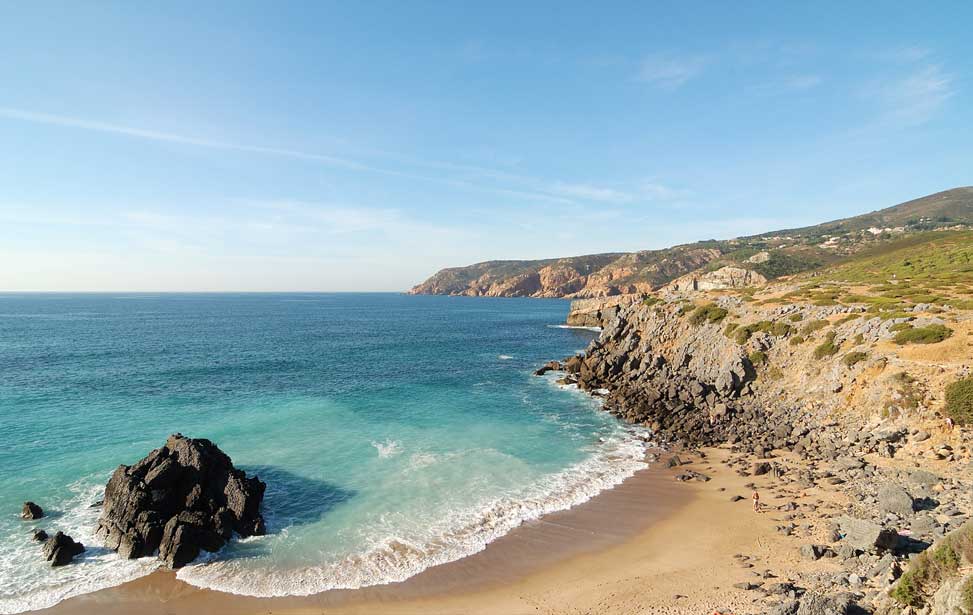
Praia do Magoito boasts a striking backdrop of towering cliffs that stretch across the horizon, creating a dramatic setting. This expansive beach features golden sands interspersed with scattered rocks, while its crystal-clear turquoise waters are renowned as one of Europe's most iodine-rich beaches. Access to the beach is facilitated by a long sloping pavement on the northern side, which traces along protected ancient fossilised dunes until reaching the point where the Mata stream meets the shoreline. The pathway commences just off the village of Magoito, offering breathtaking views that extend to Cabo da Rocha on clear days.
Praia do Magoito offers excellent amenities, including several restaurants and facilities such as public showers and toilets. With powerful waves that attract surfers year-round, families with young children may prefer exploring the numerous rock pools scattered along the shoreline for safer waters. Despite its proximity to Sintra, Praia do Magoito remains relatively tranquil, rewarding visitors with the rugged beauty of its surroundings. [ More About ► ]
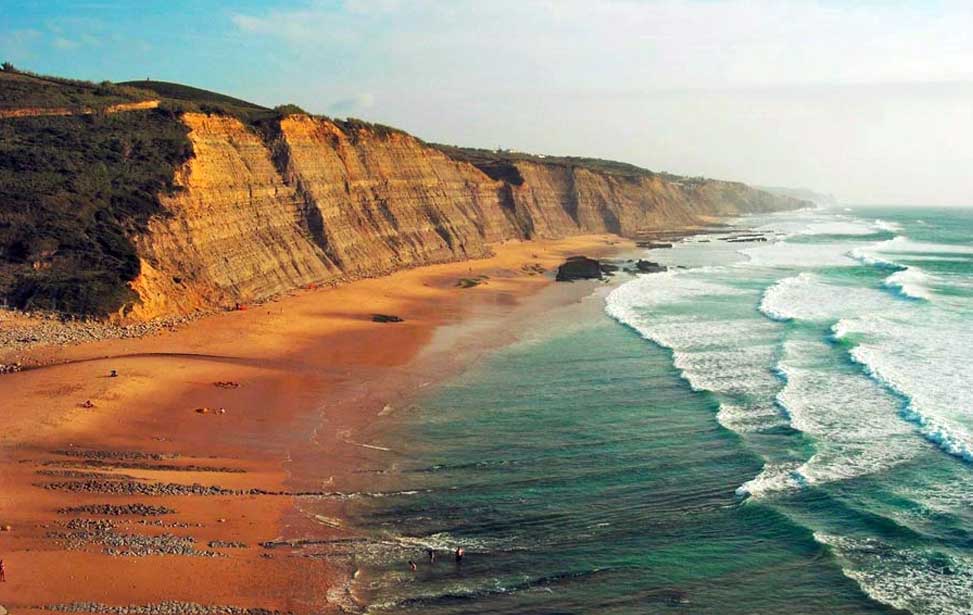
Praia Grande lives up to its name as the largest beach in the area, boasting a vast expanse of pristine golden sands awaiting visitors. Easily accessible by both private and public transport, it's a favourite spot among locals and tourists alike. The beach's impressive swell and consistent beach break make it a magnet for surfers and bodyboarders throughout the year, with occasional hosting of national and international surfing championships. The southern end of Praia Grande features magnificent slate cliffs, providing a stunning backdrop to the scenery and offering natural windbreaks for beachgoers. Climbing the steps to the cliff's top unveils not only a breathtaking view but also a surprising sight: nearly vertical dinosaur footprints dating back 170 million years. These footprints, left behind by Megalosaurus and Iguanodons, tell a fascinating geological story, as tectonic forces have uplifted and tilted the land over millions of years, creating this remarkable display. [ More About ► ]
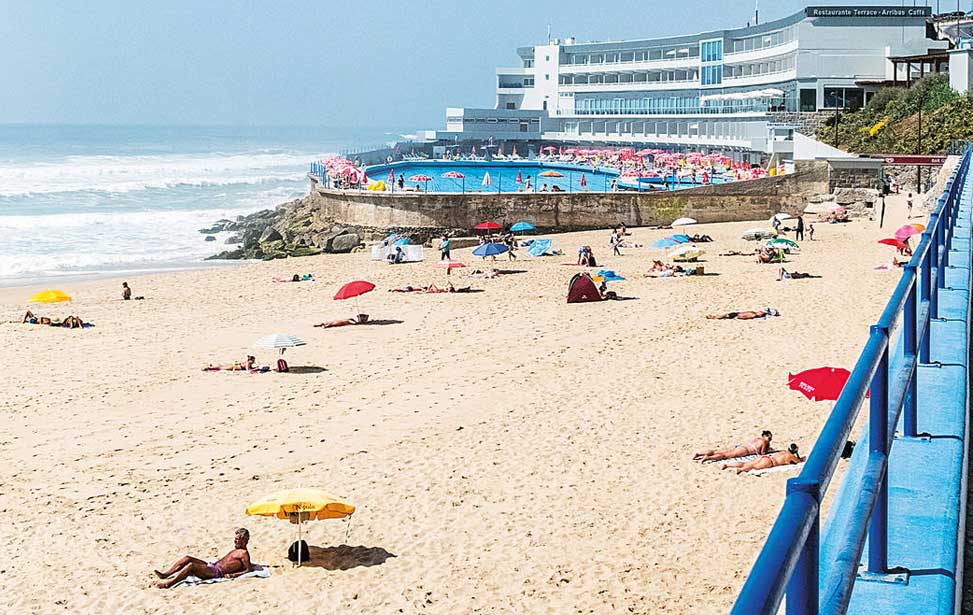
Praia Pequena may be called "small beach," but its size doesn't reflect its beauty and appeal. Situated just north of Grande Beach, it offers a tranquil escape from coastal winds. Praia Pequena is favoured by sun-seekers and water sports enthusiasts alike, with opportunities for activities like swimming and surfing. Additionally, it's a prime location for fishing, particularly for octopus and bass. Coastal paths tracing the beach's shoreline provide excellent hiking opportunities, offering scenic views of the surrounding landscape.
